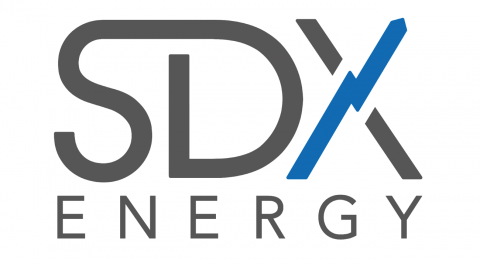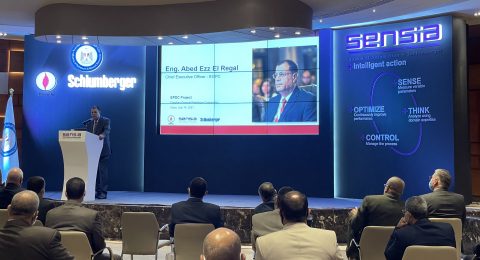Introduction
Halliburton Wireline and Perforating Services have been focused on product development in recent years, resulting in a full suite of advanced logging tools that are helping operators overcome the challenges of the oilfield. Customers are especially excited about these technologies because they have been crafted and refined with customer input to directly solve high-value problems.
The technologies talked about in this article span both open- and cased-hole logging and include advancements in formation and wellbore imaging and developments in sampling and testing.
Recent Developments
Open-hole Logging Platform
Halliburton’s LOGIQ® logging system was six years in the making. Now in use globally, it offers marked improvement in operational efficiency. The basic quad combo tool suite is about half the length and two-thirds the weight of the previous generation tool string. Lighter weight and short length provide safer, easier handling for field personnel. Customers enjoy significant rig-time savings by virtue of needing to drill less rat-hole and faster rig-up and rig-down times. Unlike some competitors’ short tool string offerings, the system’s downhole tools are fully qualified for continuous operation at 350° Fahrenheit and 20,000 psi. This characteristic preserves operational flexibility for the customer over the full range of typical operating environments.
 Improved Downhole Sensors and Systems
Improved Downhole Sensors and Systems
The Array-compensated True Resistivity Tool (ACRt™) system is one LOGIQ sensor likely to garner a fair bit of the spotlight. It features refined single transmitter/six receiver antenna geometry with intrinsic sensitivity ranges from six to 80 inches. Real-time processing is accomplished with 2D software focusing to produce resolution-matched radial induction logs with depths of 10, 20, 30, 60 and 90 inches, and these logs are available within one-, two- or four-foot vertical resolution. Novel thermal and borehole correction protocols help the ACRt system deliver unparalleled dynamic range, accuracy and tolerance for less-than-ideal logging conditions.
A multi-arm caliper tool, available with the LOGIQ system, has caught more than a few customers by surprise. While open-hole caliper measurements are ubiquitous, none offer the radial and vertical sensitivity of the multi-arm caliper tool or the power it brings to bear on log quality diagnostics, borehole volume calculations and evaluations of borehole breakout. The tool accomplishes this capability with six independent, stylus-like arms and a high sample rate.
The LOGIQ system also includes a telemetry system that provides a four-fold increase in bandwidth over the previous generation’s system. This enhancement provides faster logging speeds with current-generation, high-data rate tools.
Advancements in Borehole Imaging
Halliburton’s imaging services, designed to obtain superior quality images, include the XRMI™ (eXtended Range Micro Imager) tool for electrical images of the formation in open-hole water base mud environments, the OMRI™ (Oil Mud Reservoir Imager) tool for electrical formation images in open-hole in oil-based mud, and the FASTCASTTM (Fast Circumferential Acoustic Scanning Tool) device for faster, improved interpretations of casing condition and cement-bond quality.
The XRMI tool is specifically designed to overcome the limitations of previous generation tools in high Rt/Rm contrast environments. With increased transmitting power, advanced digital signal acquisition and ultra low noise electronics, image fidelity is substantially improved. Moreover, the XRMI tool makes electrical imaging available in logging environments where it was not previously possible.
The OMRI tool generates electrical images of the formation similar to those generated by the XRMI tool. While the form and function of the OMRI products and service will be familiar to XRMI tool customers, the OMRIsm service has required the development of highly proprietary measurement principles. Improved borehole coverage is provided by six OMRI pads, each of which makes six resistivity measurements. Improved pad contact in washed out, elliptical or irregular boreholes is achieved by mounting the pads with three-axis articulation and on arms with independent linkage.
Cement/Casing Evaluation
The FASTCASTIsm cement and casing inspection service is based on the highly successful CAST-VIsm service. This next generation, acoustic scanner-type technology brings together state-of-the-art digital electronics, advanced downhole signal processing and more powerful surface software to produce higher resolution 3D images of both cement quality and casing integrity while acquiring the data with better than five times the logging speed (up to 60 feet per minute). The FASTCAST tool offers a range of scanner heads for use in casings from five to 20 inches.
 Sampling and Testing Technologies
Sampling and Testing Technologies
Two of Halliburton’s highly specialized probe technologies, the Oval Pad and the Straddle Packer, significantly expand the operating range for PVT fluids sampling and pressure testing, while a percussion sidewall coring service and two rotary coring services provide undistorted samples for a range of petrophysical testing and analysis.
The Straddle Packer Sub (SPS) is an inflatable, packer-probe module that augments the standard Dual Probe Sub (DPS) for the Reservoir Description Tool (RDT™) device. The spacing between upper and lower inflatable isolation packers greatly increases the formation area in contact with the RDT device and thus extends sampling capabilities to very low mobility and highly unconsolidated formations. Fast packer inflation times—as much as 50 percent faster than competitors’ offerings—are afforded by the RDT device’s 1.5-horsepower pump. The SPS is also differentiated by its two independent intake ports. This redundancy helps minimize the risk of having to abort sampling operations due to plugging, offers the ability to circulate between the ports, and holds the potential to observe fluid stratification in the annular space. Finally, the SPS packers are equipped with a “power close” feature that extends packer life and limits the risk of tool sticking.
The Oval Pad is offered as a modification to the standard RDT DPS device. The single, elongated Oval Pad replaces the two standard pads. It combines the functionality of a conventional rubber sealing element with a large, reinforced and recessed flow channel. This flow channel connects the two DPS probes and increases the flow area in contact with the formation to many times that of an individual standard probe. Similar to the SPS but involving only a fraction of the operating time, cost and risk, the Oval Pad extends fluid sampling and pressure testing to lower mobility reservoirs. The Oval Pad can be particularly useful in testing laminated formations where placement of standard discrete probes may be problematic.
These pressure and fluid sampling devices provide ultimate flexibility to the customer. The RDT device can be configured to run with all three of Halliburton’s probe technologies in one trip in the hole—the standard DPS, a DPS equipped with the Oval Pad, and an SPS.
A digital, software-controlled, fully combinable percussion sidewall coring system (DC-SWC) is also available. With this system, there is no limit on the number of core guns that can be combined, and each gun can recover 29 cores. The system is rated to 25,000 psi and 400° Fahrenheit. Key parameters related to shot integrity are recorded at the surface, which alleviates shot uncertainty and unnecessary core point double-shooting. The advantage to combinability is most noticeable in Toolpushersm operations where, for example, the RDT device and multiple DC-SWC tools can be deployed in a single trip.
Halliburton’s rotary coring capabilities include the H-RSCT™ (Hostile Rotary Sidewall Coring Tool) and the RSCT™ (Rotary Sidewall Coring Tool) devices. The H-RSCT device is rated for 25,000 psi and continuous operation at 400° Fahrenheit. The RSCT device, the standard-duty rotary coring device, is rated for 20,000 psi and 350° Fahrenheit. Both are software controlled, a feature that permits either fully automated or manual control over core-drilling operations. Like the percussion cores mentioned above, the H-RSCT and the RSCT devices are fully combinable. Both tools feature increased power at the bit, resulting in decreased drill times. The very latest thinking in mechanical and electrical design has been incorporated into  both these tools and this has had a marked impact on reliability and core recovery.
both these tools and this has had a marked impact on reliability and core recovery.
In Summary
The LOGIQ system, Halliburton Wireline and Perforating Services’ next generation open-hole logging platform, is available globally. The platform features improved operational efficiency owing to its lighter weight, short length and higher-performance downhole sensors.
Halliburton’s formation imaging capabilities extend to both oil-mud and ultra high Rt/Rm environments. Casing and cement inspection is possible with improved fidelity and with much improved logging speeds. Two innovative designs support of fluid and pressure testing services, both of which expand the operating limits for sampling and the speed the operation and lower the customer’s risk. Rotary and percussion coring capabilities have been extended to include hostile environments.
These services are representative of Halliburton’s commitment to meeting the challenge of maintaining and increasing production as resources become harder to find and worldwide demand continues to grow.







